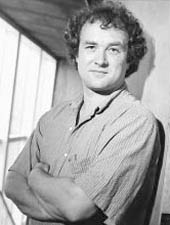Gutch, M. J., Flint, A. J., Keller, J., Tonks, N. K., Hengartner, M. O. (February 1998) The Caenorhabditis elegans SH2 domain-containing protein tyrosine phosphatase PTP-2 participates in signal transduction during oogenesis and vulval development. Genes & Development, 12 (4). pp. 571-585. ISSN 0890-9369
Preview |
PDF (Paper)
Tonks Genes and Development 1998.pdf - Published Version Download (1MB) | Preview |
Abstract
Src homology-2 (SH2) domain-containing protein tyrosine phosphatases (SHPs) have been identified as either positive or negative regulators of signaling events downstream of receptor protein tyrosine kinases (R-PTKs). We describe here our characterization of ptp-2, a Caenorhabditis elegans gene that encodes a 668-amino-acid SHP. We isolated a recessive ptp-2 loss-of-function allele, op194, that lacks the conserved protein tyrosine phosphatase catalytic domain by screening for transposon-mediated deletion mutations. Homozygous ptp-2(op194) hermaphrodites exhibit a completely penetrant zygotic semisterile/maternal effect lethal phenotype, characterized by the presence of abnormally large oocytes in the zygotic semisterile animals. These phenotypes indicate that PTP-2 activity is essential for proper oogenesis. Gain-of-function let-GO ras alleles rescued the defects associated with ptp-2(op194), suggesting that LET-GO Ras acts downstream of, or in parallel to, PTP-2 during oogenesis. Although ptp-2 function is not required for normal vulval development, ptp-2(op194) altered significantly the vulval phenotypes caused by mutations in several genes of the inductive signaling pathway. The penetrance of the multivulva phenotype caused by loss-of-function mutations in lin-15, and gain-of-function mutations in let-23 or let-60 ras, was reduced by ptp-2(op194). Moreover, ptp-2(op194) increased the penetrance of the vulvaless phenotype conferred by a weak loss-of-function sem-5 allele. Taken together, our genetic data positions PTP-2 activity downstream of LET-23 in the vulval induction signaling pathway. Although PTP-2 functions to transmit a requisite signal during oogenesis, PTP-2 function during C. elegans vulval cell differentiation appears to be directed at regulating the overall strength of the inductive signal, which may contribute to the quantitative differences in signaling required for the proper specification of the 1 degrees, 2 degrees, and 3 degrees vulval cell fates.
Actions (login required)
 |
Administrator's edit/view item |




